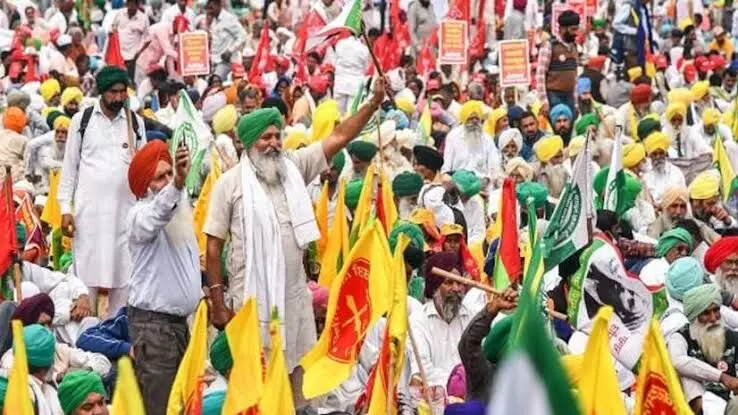WHY ARE OUR "ANNADATA" AGAIN ON STREETS

The farmers of India have restarted their protest to fulfil their additional demands with new representation. Last time, they achieved a significant success when the government withdrew the three Farmers’ Bills.
The first farmers’ protest began in 2020-2021 against the agricultural reforms introduced by the government through the passing of three agricultural laws: The Farmers Produce Trade and Commerce (Promotion and Facilitation) Act 2020, Farmers (Empowerment and Protection) Agreement on Price Assurance and Farm Services Act 2020, and Essential Commodities (Amendment) Act 2020.
Following the passage of these acts, farmers from Punjab, Haryana, and several parts of Uttar Pradesh initiated an agitation against these farm laws. Numerous rounds of discussions were held between Union ministers and leaders of the agitation, which eventually led to the government repealing these laws in 2021. The protest was then called off, and the farmers returned to their respective states. The withdrawal also came with another promise, namely the legalization of Minimum Support Price (MSP).
The Centre ensured that a panel would be set up to address the second demand for a legal guarantee on MSP. On July 12, 2022, the government established an expert committee called the Committee on MSP under the chairmanship of Mr. Sanjay Agarwal, former Agriculture Secretary. The absence of representation of farmers and economists in this committee, and the slow pace of the committee’s work, raised concerns.
Subsequent to the inconclusive talks with the Union government, On February 13, 2024, the farmers of Punjab, Haryana, and parts of Uttar Pradesh started the ‘Delhi Chalo’ march under the leadership of Sarwan Singh Pandher, convenor of Kisan Mazdoor Morcha, and Jagjit Singh Dallewal, Coordinator of Samyukt Kisan Morcha (Non-Political). This time, farmers have come with one primary demand: a legal guarantee for Minimum Support Price for all crops.
Farmers want the MSP to be calculated according to the formula given in the report of The National Commission of Farmers formed in 2004, which was headed by the father of the Green Revolution in India, Prof. M.S. Swaminathan. The NCF proposed the C2+50% formula, wherein C2 refers to the comprehensive cost of production. The report stated that farmers should receive 50% more than the total cost of production incurred by them. Therefore, farmers demand that the formula given in Prof. Swaminathan’s recommendations should be followed in calculating the MSP for all crops. Further requests encompass India’s withdrawal from the World Trade Organization (WTO), which deals with global trade rules, a full waiver of loans for farmers and farm labourers, provision of a monthly pension for farmers and farm labourers from the age of 58, rescission of the Electricity Amendment Bill of 2020, reinstatement of the Land Acquisition Act from 2013 to secure farmers’ consent and compensation to be set at four times the collector rate, and provision of 200 days of employment annually under the Mahatma Gandhi National Rural Employment Guarantee Act (MNREGA) at a daily wage of ₹700, among other measures. Additionally, they demand justice for the Lakhimpur Kheri incident, urging the government to take proper action to provide justice for the victims and clarify their stance on Minister of State Ajay Mishra.
Now, the question arises: Is the legal guarantee of MSP beneficial for the country’s development? MSP legalization undoubtedly benefits farmers, but if the government provides benefits to every farmer according to the Swaminathan recommendation, it could create a significant burden on the country’s economy. Therefore, a careful balance between supporting farmers and ensuring economic sustainability needs to be struck.
